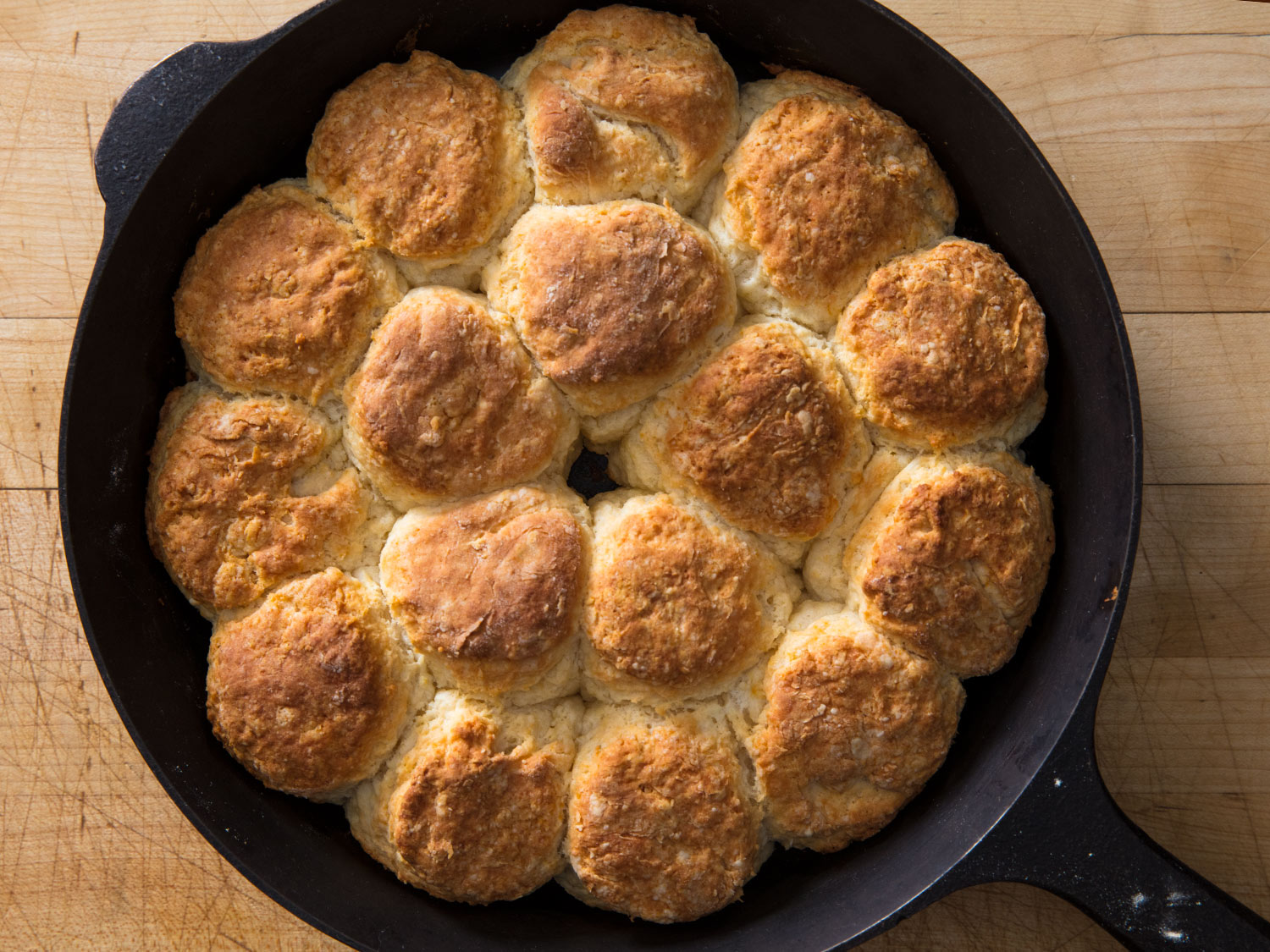
[Photographs and video: Vicky Wasik]
I love biscuits. From their crispy bottoms to their buttery tops and all the fluffy bites in between, biscuits are perfect in every form—loaded with garlic and cheddar, dolloped over a dish of chicken pot pie, stuffed with ice cream and roasted strawberries, or simply buttered and enjoyed on their own.
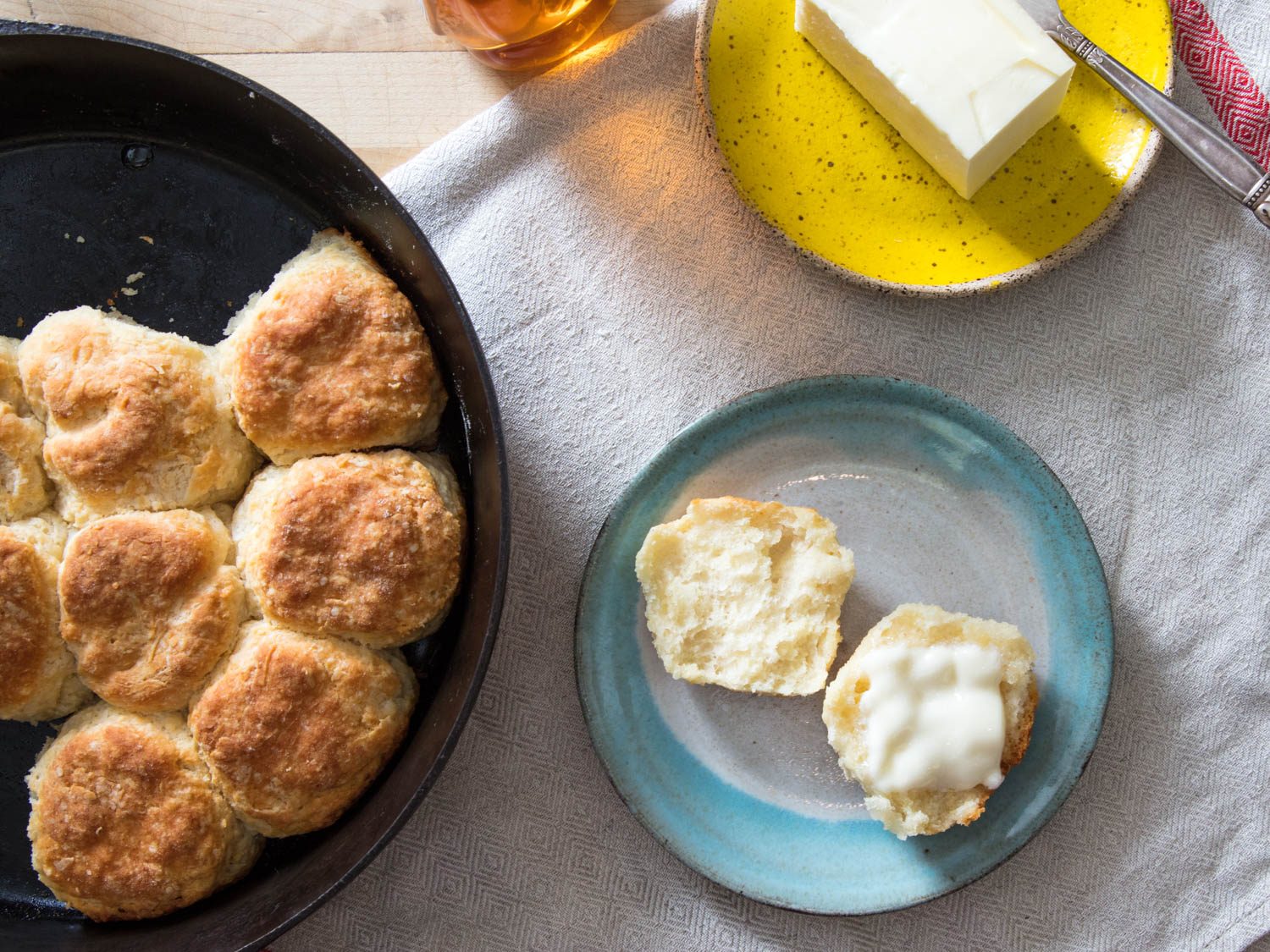
Biscuits are a type of quick bread, which means you can throw them together fast—ideally with whatever ingredients you have around the house. Down south, buttermilk is the de facto foundation for biscuits, as it is in the recipe in my cookbook. Though it’s painful to admit, this isn’t necessarily because buttermilk makes the best biscuit, but because buttermilk is virtually omnipresent in our homes, as reliable as the light in the fridge. Elsewhere, buttermilk is something of a specialty ingredient, which necessitates a different approach.
Rather than shoehorn buttermilk substitutes into a recipe where they don’t belong, I prefer to start with a recipe designed with another kitchen staple—plain yogurt.
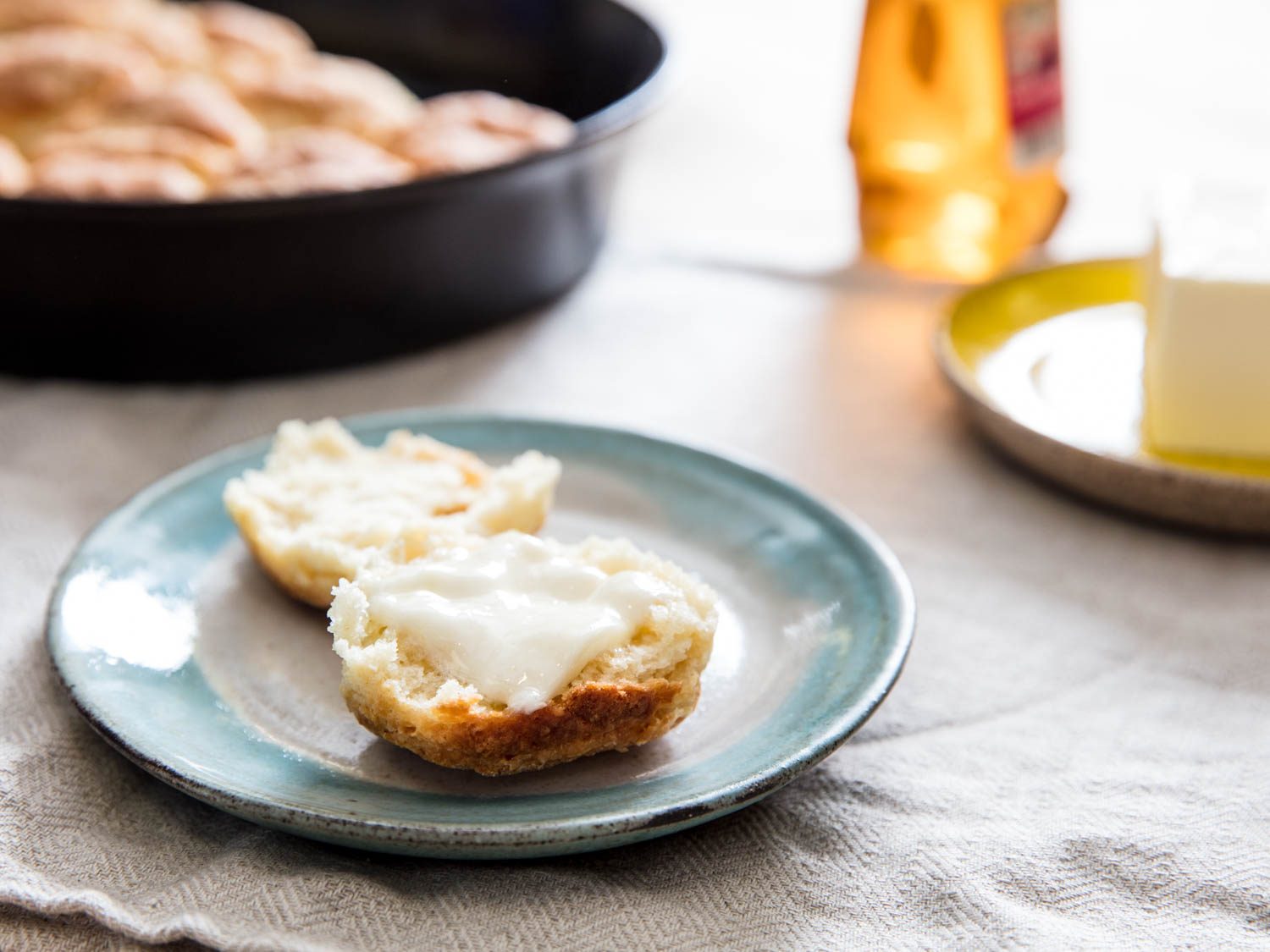
Plain yogurt can be found at any supermarket or convenience store, and its popularity as a snack makes it a common household item all over the world. It’s also wonderfully thick, with a deliciously complex flavor—a mellow tang totally unlike the sharp bite of vinegar or lemon juice splashed into a glass of milk. That profile makes yogurt ideal for biscuits, not as a direct substitute for buttermilk but as the foundation for a recipe of its own.
Due to its thickness, yogurt simply can’t be used as a 1:1 replacement for buttermilk; it takes about 30% more to properly hydrate biscuit dough. In turn, that ratio brings a lot more moisture and acidity into the equation. That can be a beautiful thing in the right context—just imagine the velvety crumb of a sour cream pound cake—but it has the potential to make biscuits gummy and dense. To counteract that risk, all we need is a pinch of baking soda to neutralize the excess acidity and give the dough a more powerful rise.
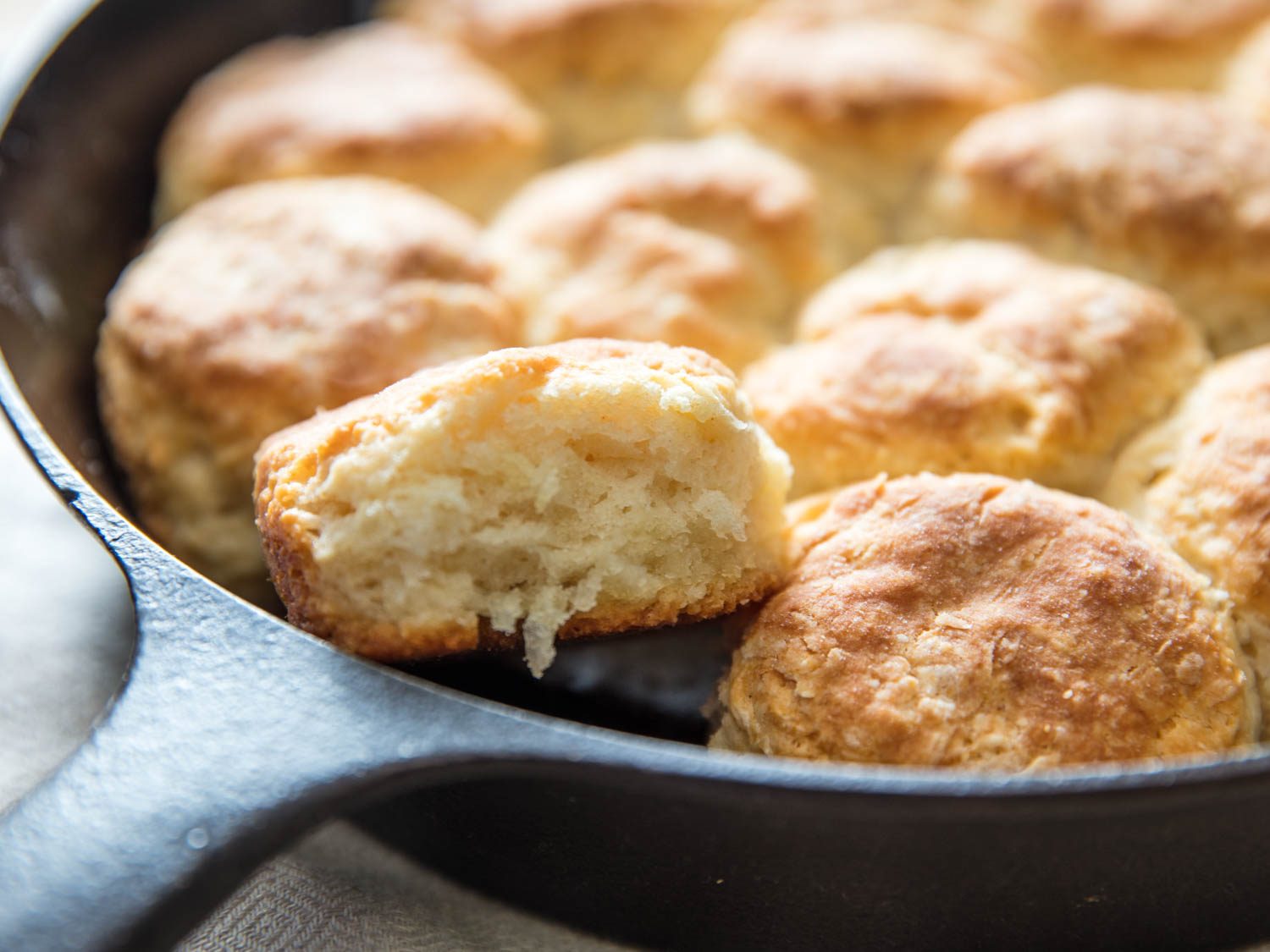
That makes for high-rising biscuit with a flavorful and golden crust, with no heaviness or gummy layer in sight. By using baking soda in moderation, with baking powder for the dough’s primary rise, the yogurt’s acidity (and therefore its tangy flavor) shines through—the perfect counterpoint to a biscuit’s buttery richness.
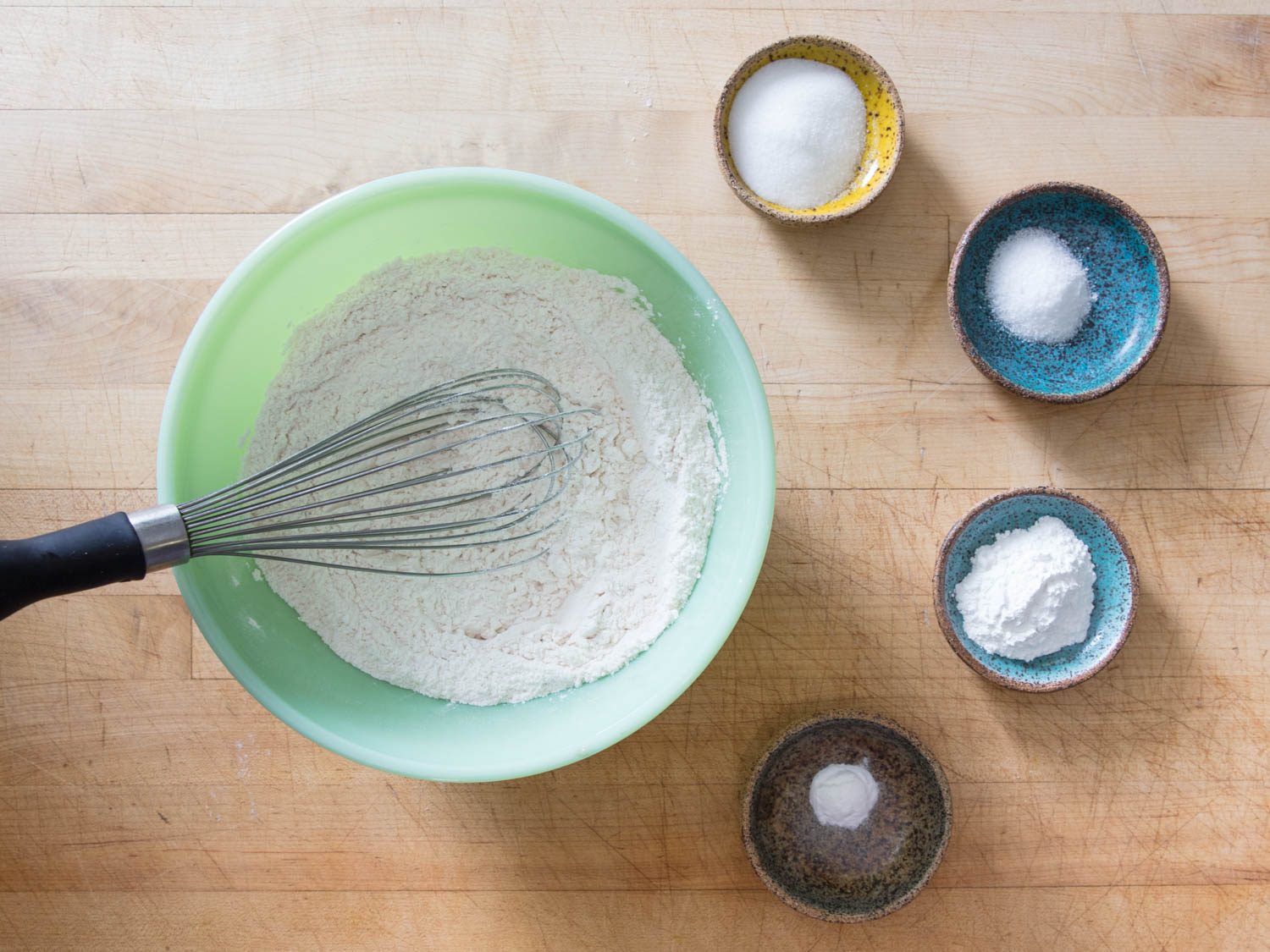
The biscuit mix itself is a simple combination of all-purpose flour, sugar, salt, baking powder, and baking soda. For light and fluffy biscuits, steer clear of any flour made from 100% hard red wheat; this style is relatively low in starch and high in protein, readily forming gluten in a high-moisture dough. That’s great when it comes to making chewy breads and pasta, but bad news for light and tender biscuits. Nor do I recommend going overboard in the opposite direction with a flour made from 100% soft white wheat, a high-starch/low-protein scenario that can produce biscuits that are borderline cakey, too tender and crumbly to split for breakfast sandwiches and the like.
As with most things in life, I find it better to avoid extremes and take the middle road. Here, that means using a blended all-purpose flour such as Gold Medal, made from both types of wheat for the perfect balance of protein and starch. It makes biscuits that are fluffy and light, but well structured, so they can be easily split without crumbling apart.
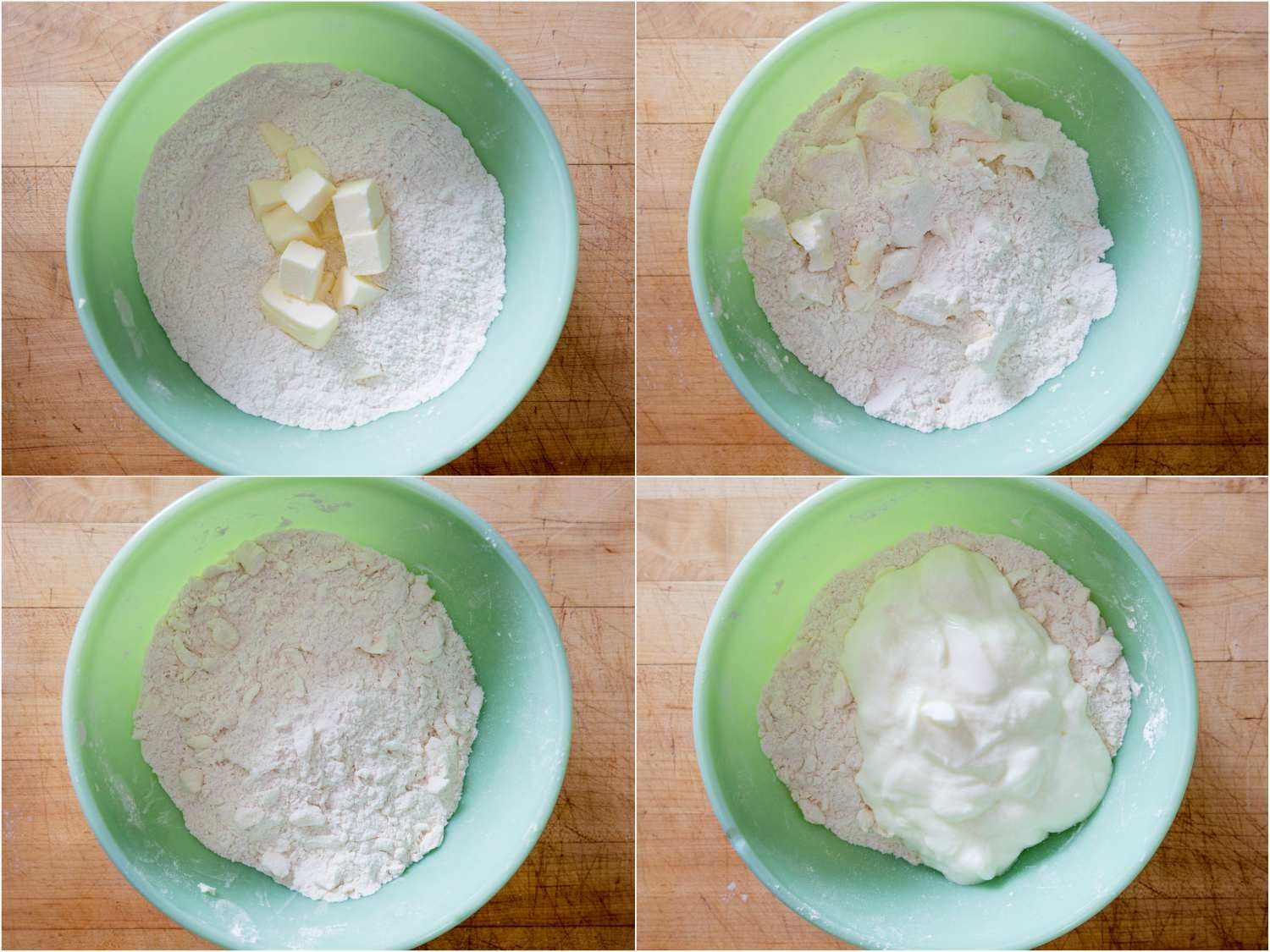
With the dry mix ready to go, I toss in 1/2-inch cubes of butter, then smash each one flat. From there, I continue smashing and rubbing the butter into small pieces, with a few larger, Cheerio-sized bits here and there. I like working with my hands so I can get a sense of the butter’s consistency; it should feel cool and firm but pliable, never cold or hard. This step can be done in a food processor with a few careful pulses, just take care not to overdo it. Either way, the buttery mix can be stored in an airtight container for up to a month in the fridge, or mixed with the yogurt straight away.
After adding the yogurt, the mix will seem crumbly and dry, with pockets of flour lurking at the bottom of the bowl. This is perfectly normal, so resist the temptation to add more liquid. The dough will eventually come together in a shaggy ball; you just have to be patient.
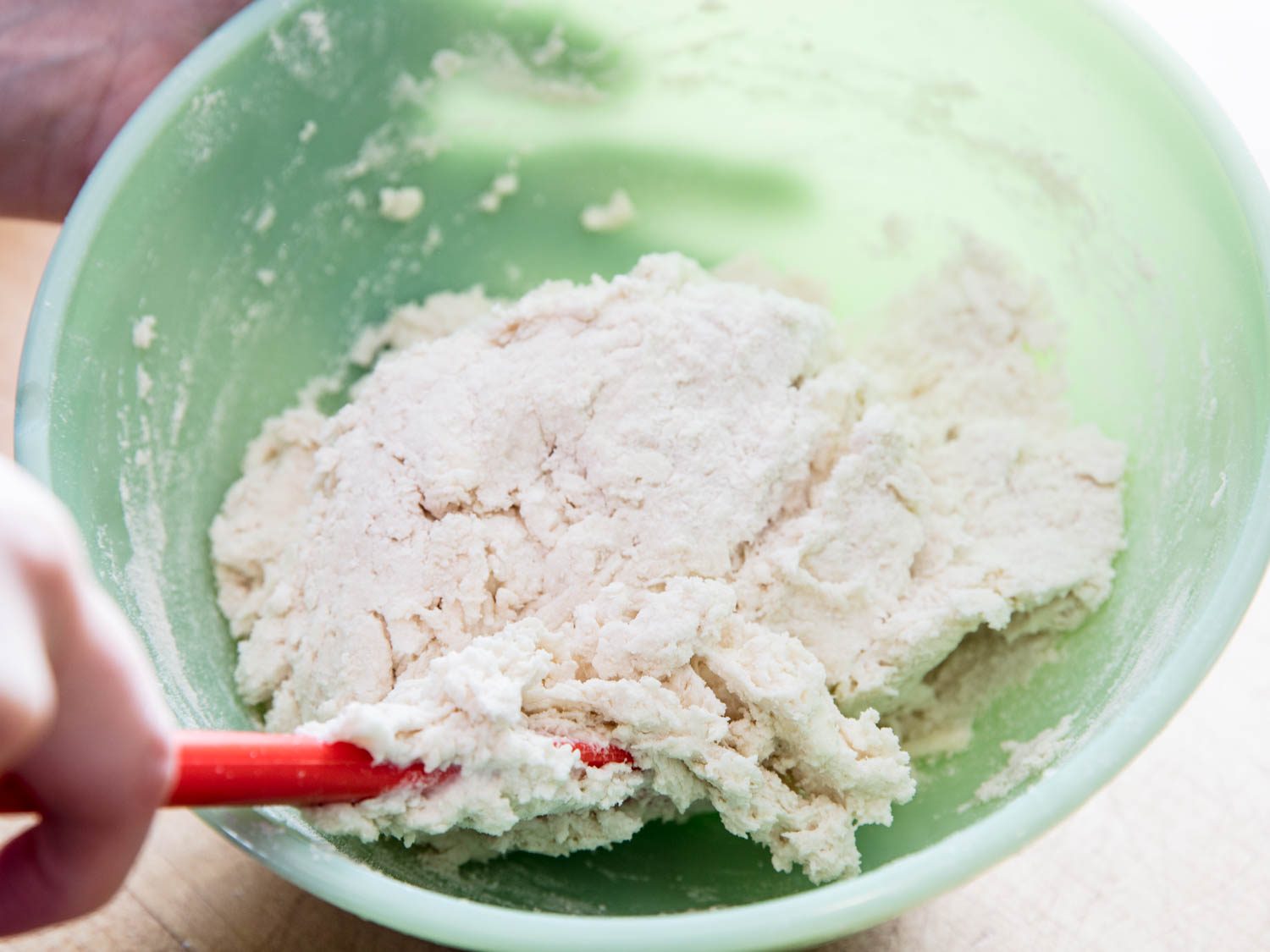
If the flour hasn’t been fully incorporated, the dough is undermixed, so keep at it until the dough comes together in a rough ball. Turn it onto a lightly floured surface and use your hands to pat the dough into a squarish shape approximately 1/2 inch thick. That’s right, pat. I like playing patty cake with the dough because it’s so soft, so much so that it can easily compress under the weight of a rolling pin, or else be rolled too thin. Working with my hands forces me to be gentle and patient, keeping the dough thick and light.
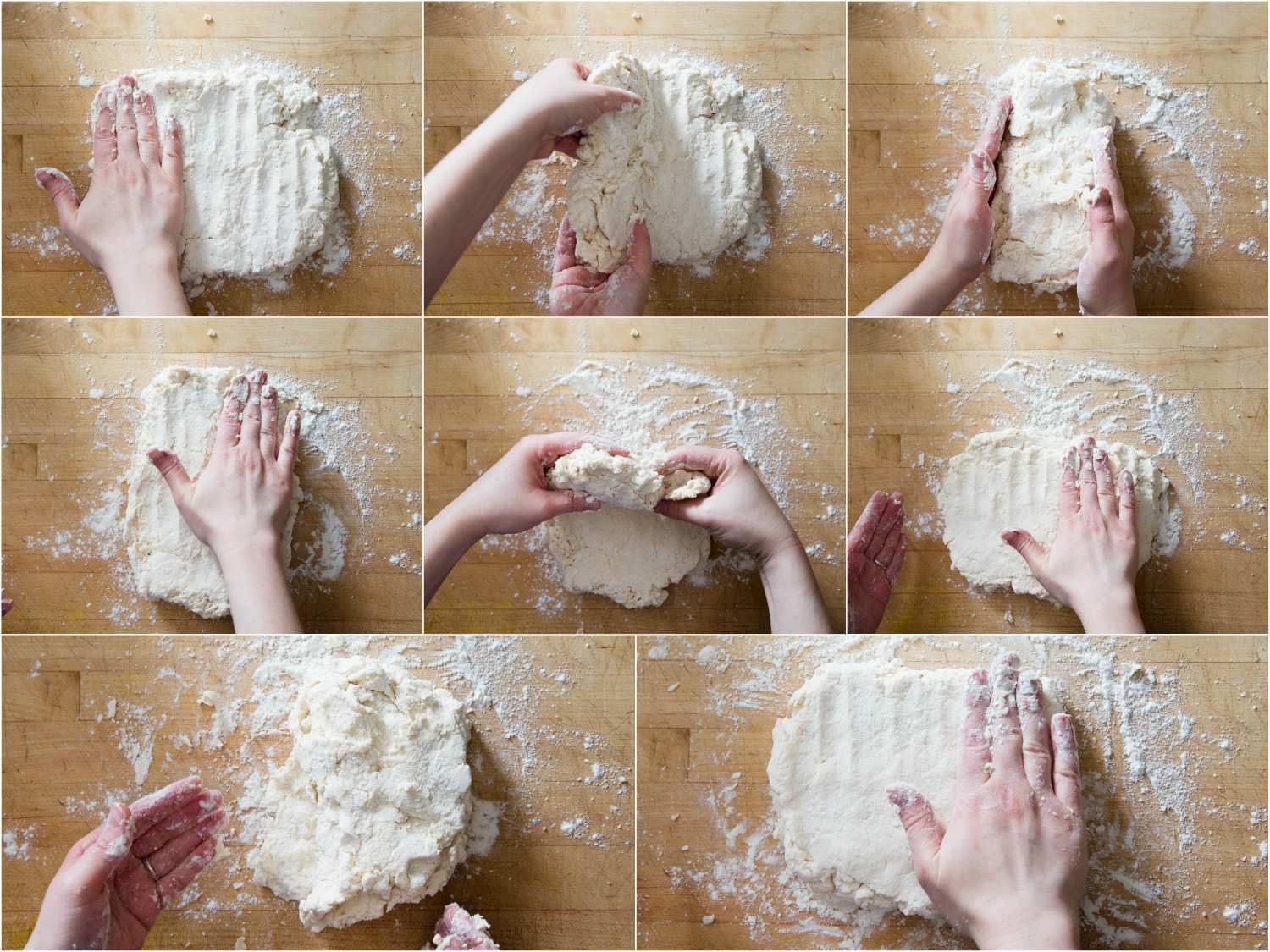
After patting it out, fold the dough in half and repeat the whole process of patting and folding two more times, for a total of three folds. This patting/folding process takes the place of kneading, developing gluten in the dough in a very quantifiable way while also incorporating a few rough layers. In turn, that creates flakes and fault lines within the biscuits, allowing them to be neatly pulled apart for sandwiches, shortcake, or just sopping up gravy down the road.
After the final fold, pat the dough until it’s 3/4-inch thick, then cut however you like. Gather and gently knead the scraps to pat/fold/roll once more. The number of biscuits will vary dramatically depending on the exact thickness of the dough and the specific cutter; with the 1 3/4-inch round from my nested set, I usually get about fourteen small biscuits. That number drops to about seven when dealing with 2 1/2-inch rounds, so please bear in mind that small adjustments will greatly affect the yield.
I like to wipe the cutter with a paper towel after cutting each biscuit. Not only does this keep their shape neat and round, but clean cuts also help the biscuits rise straight and tall.
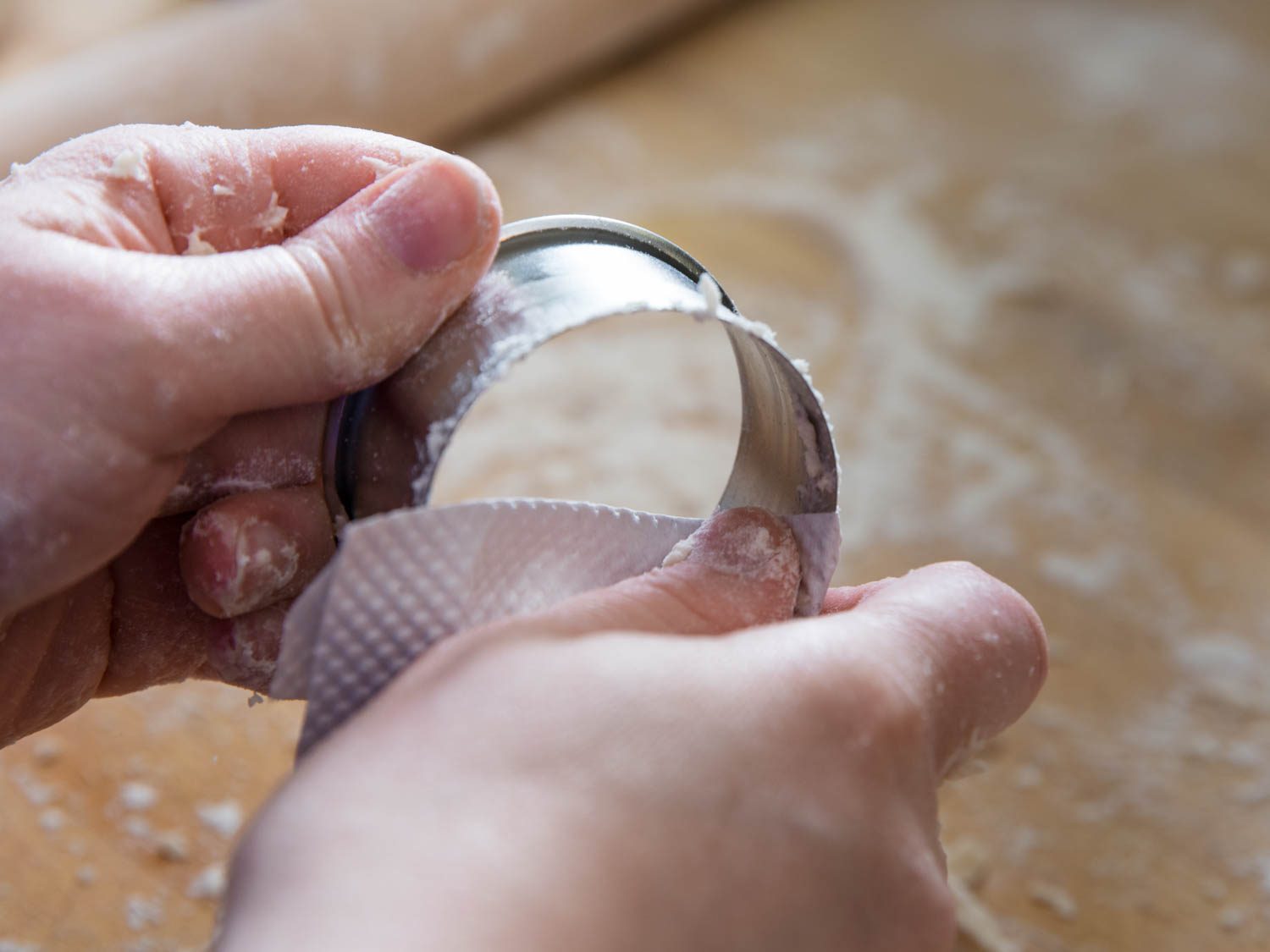
Arrange the cutouts close together in a 10-inch cast iron skillet, which gives the biscuits a crisp and golden crust along the bottom. Biscuits love to snuggle, so don’t worry if the pan seems a little crowded; they’ll support each other in the oven, spreading less and rising more, for biscuits that are thick and tall.
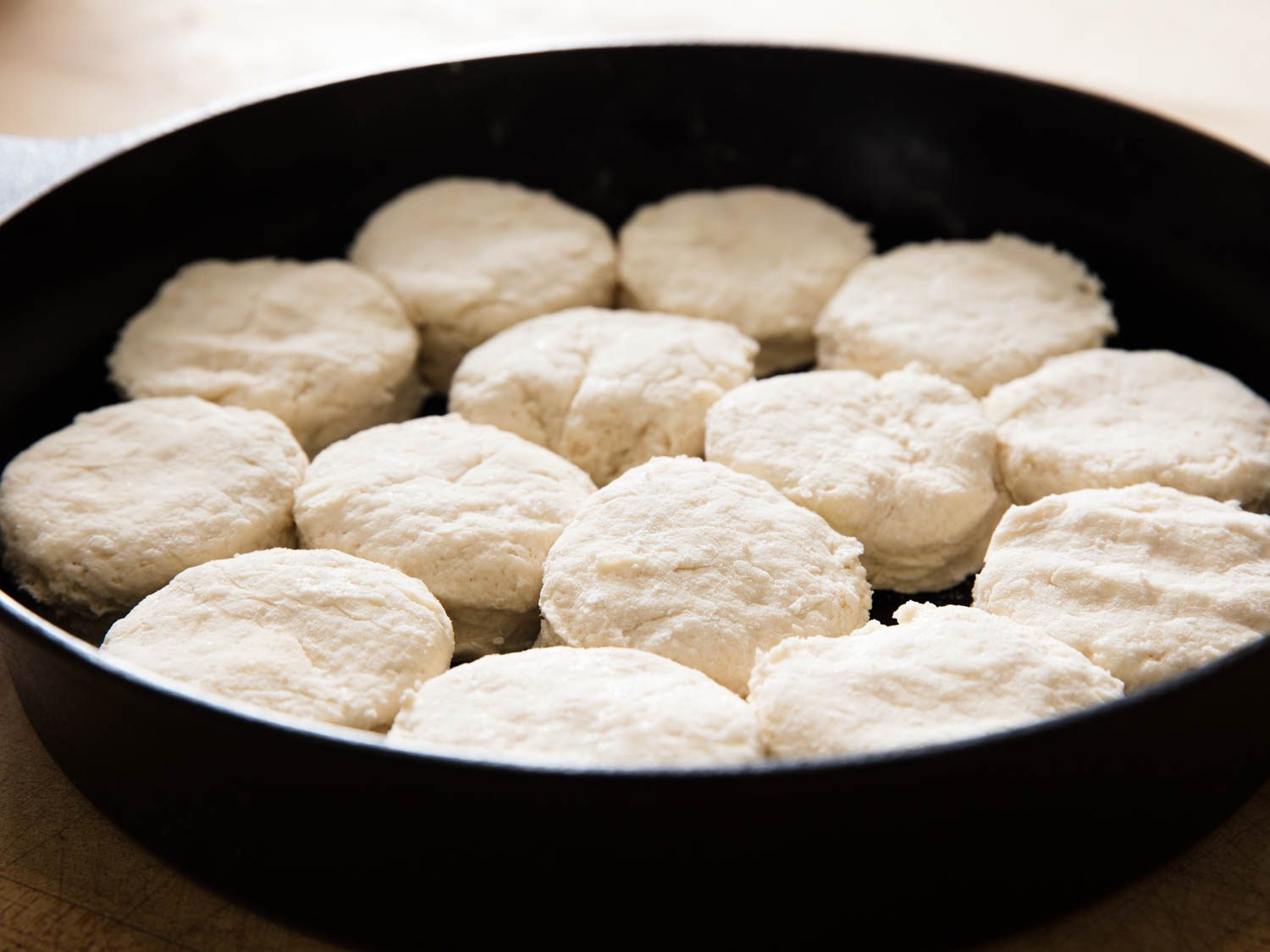
Thanks to all the butter, yogurt, and baking soda, these biscuits have no problem browning on their own without anything else brushed on top. Just pop the skillet in a 400°F oven and bake until the biscuits are golden brown, about 20 minutes.
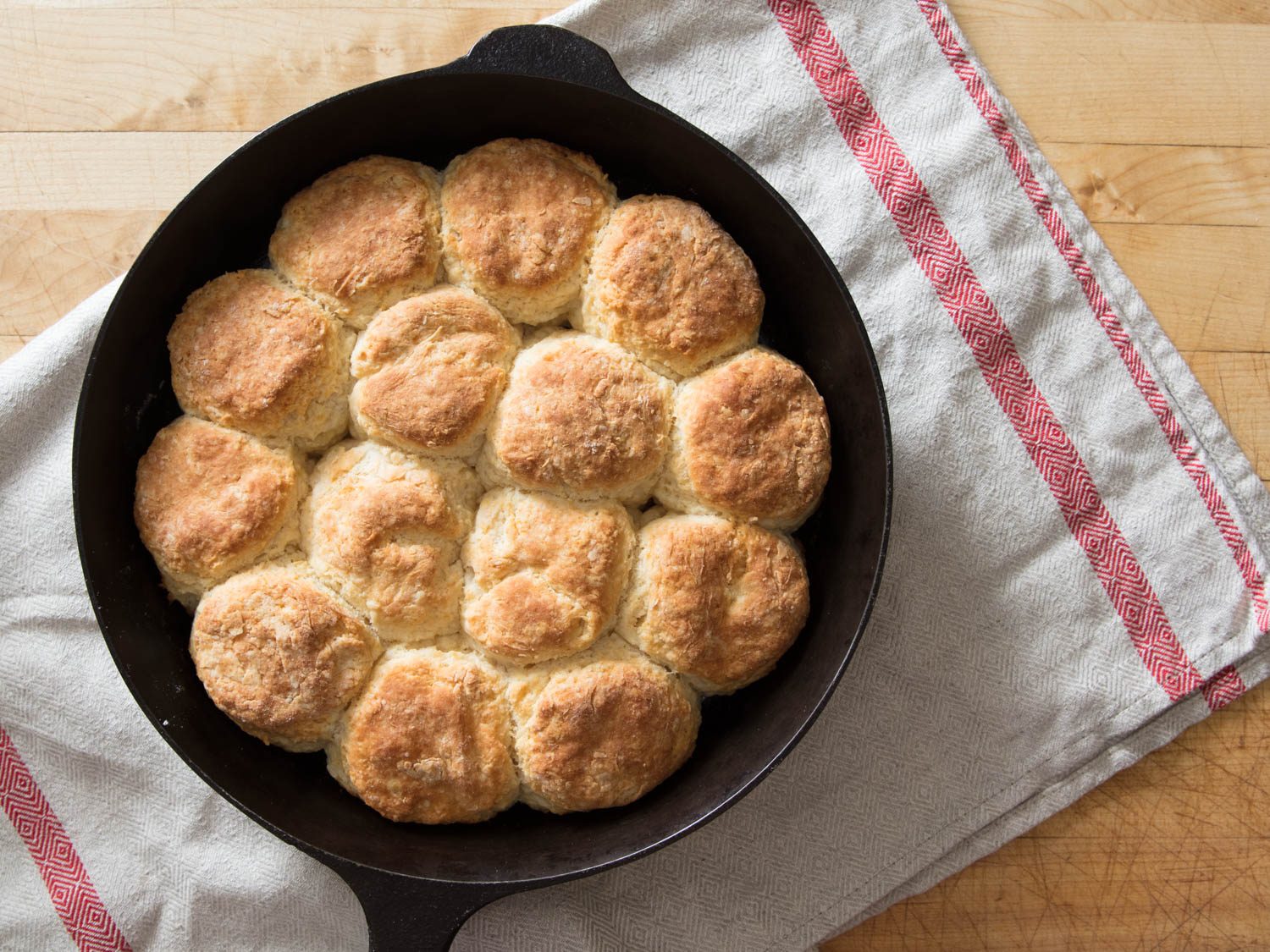
Let the biscuits rest about 5 minutes before digging in; prior to that the crumb will be so soft that the biscuits may seem a little gummy. All they need is a short rest to set up, and trust me, that cast iron skillet will keep them steaming hot.
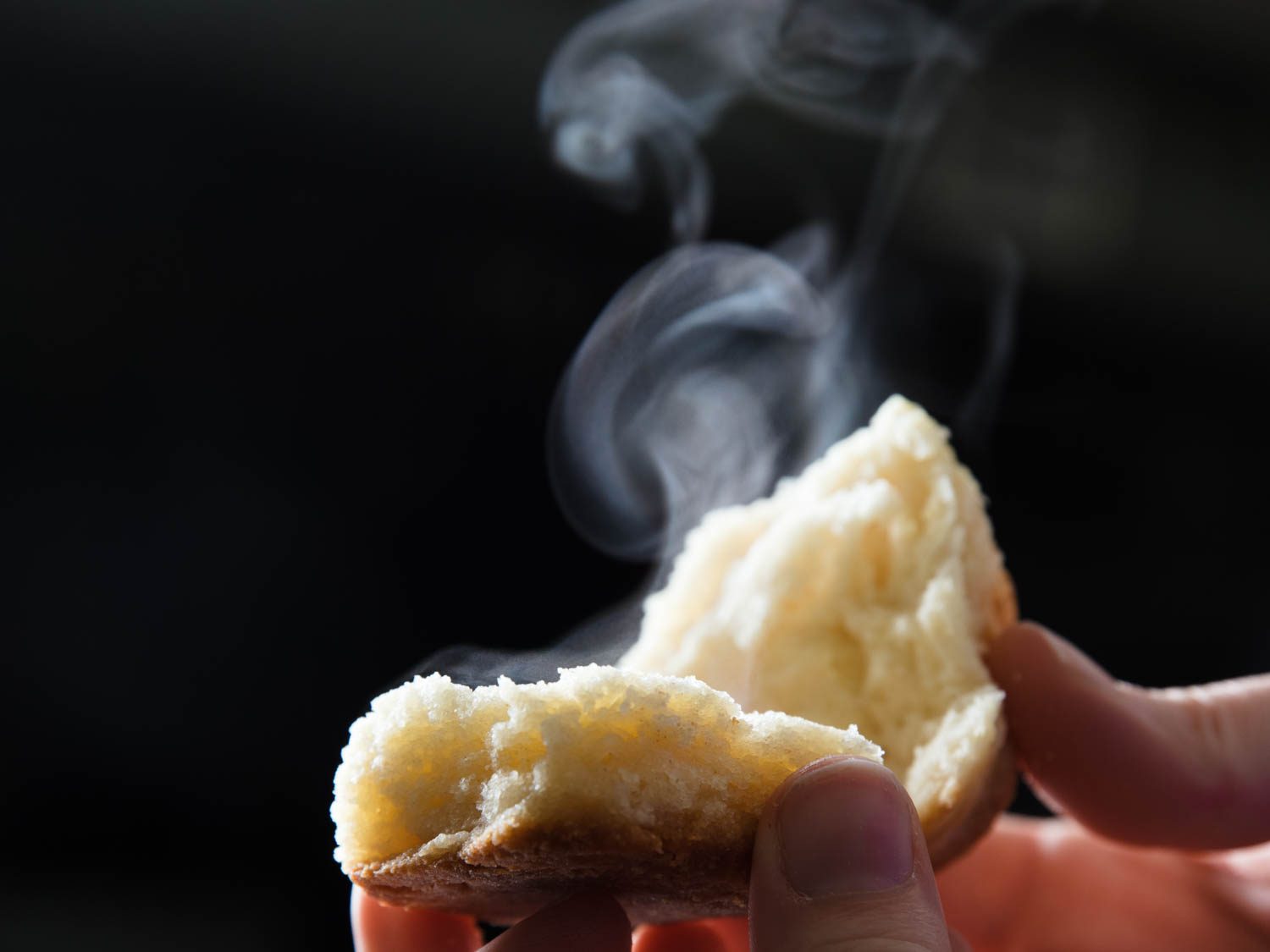
Biscuits are a truly multi-purpose bread, one that shouldn’t depend on the availability of buttermilk, or be condemned to mediocrity thanks to substitutes that don’t work (or taste as good). With a recipe designed with yogurt from the start, these biscuits will be light, tender, and flavorful even without buttermilk. Just please, no one tell my grandmother.
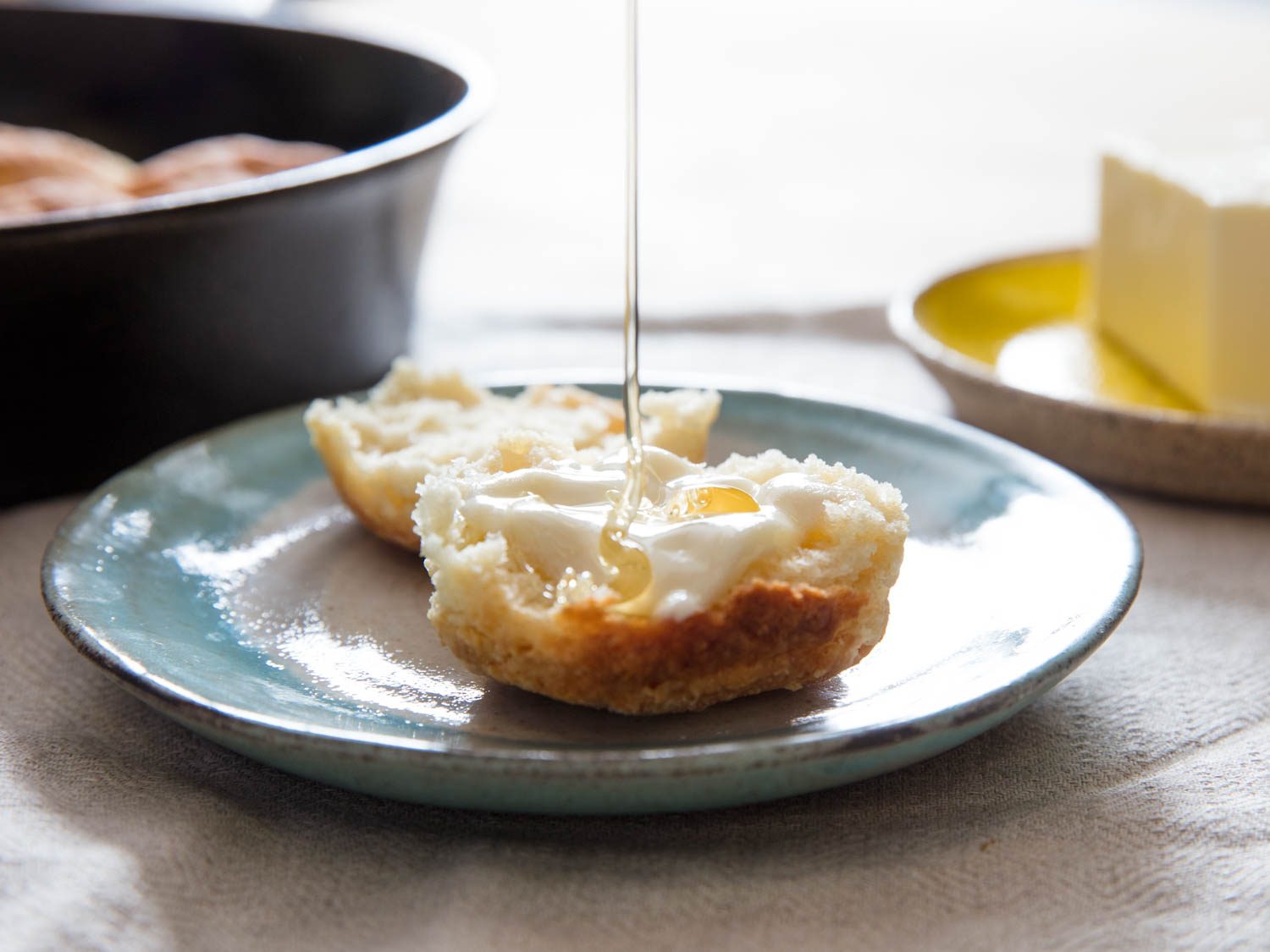
Source link